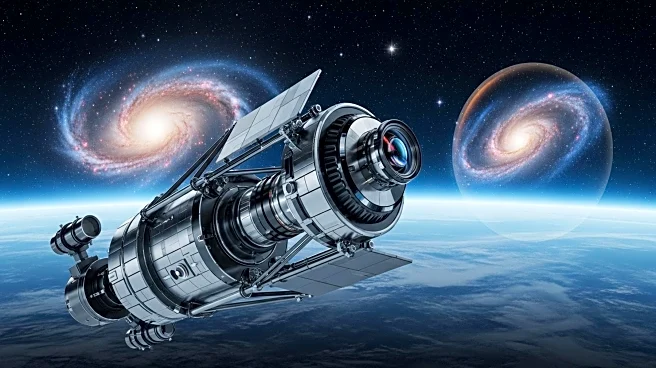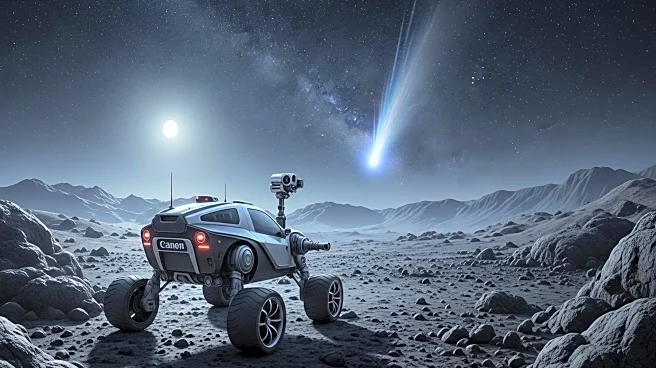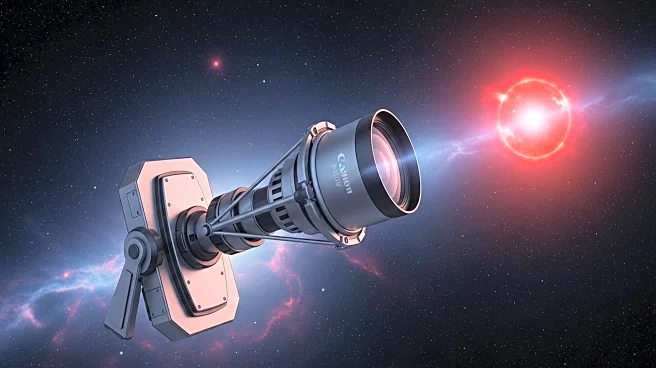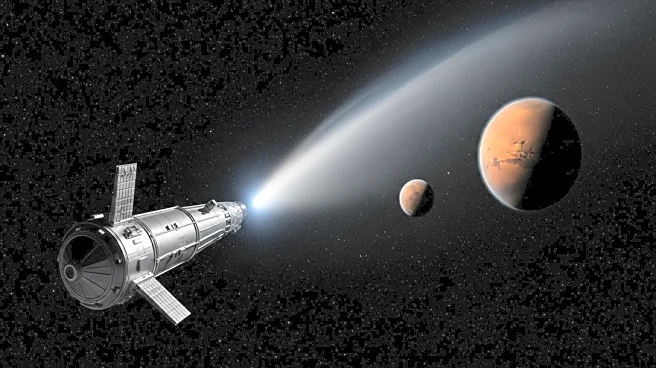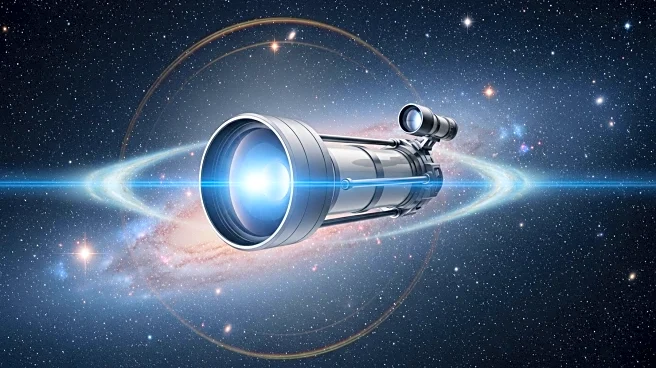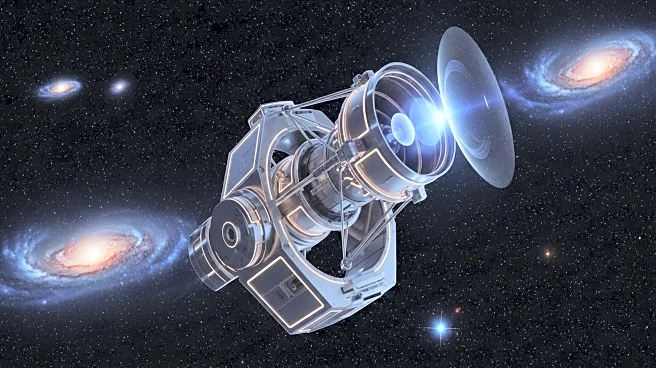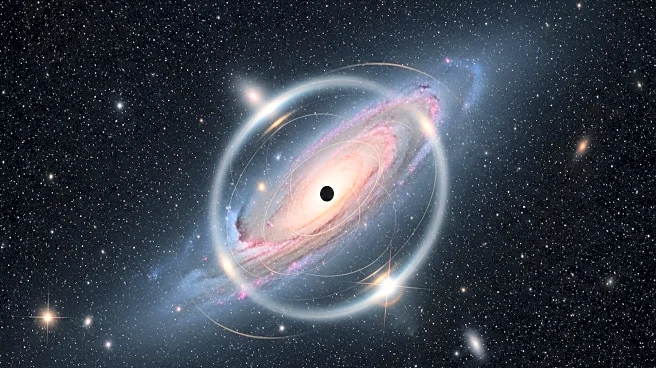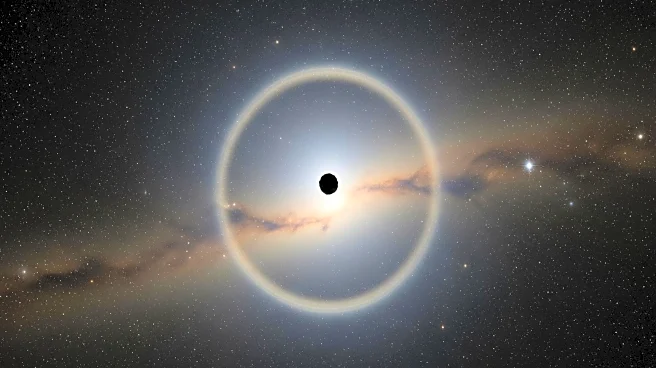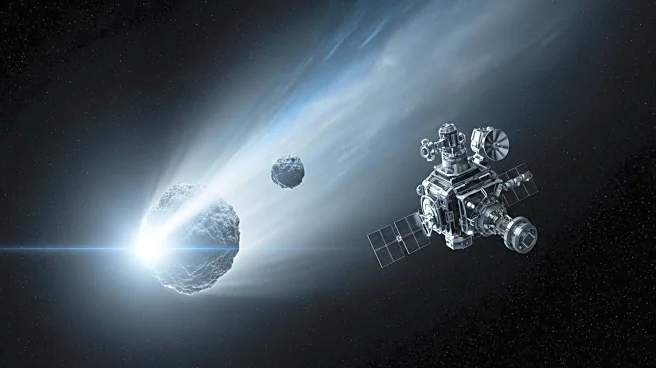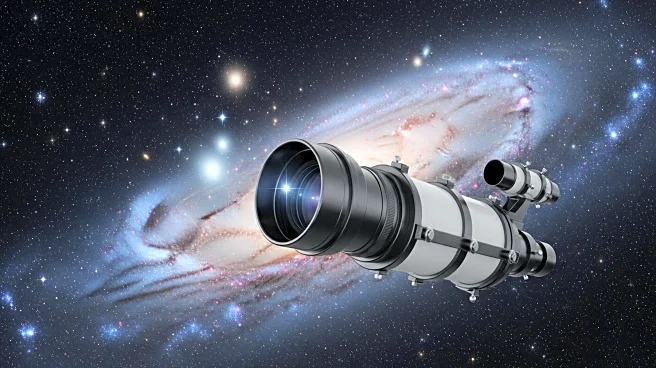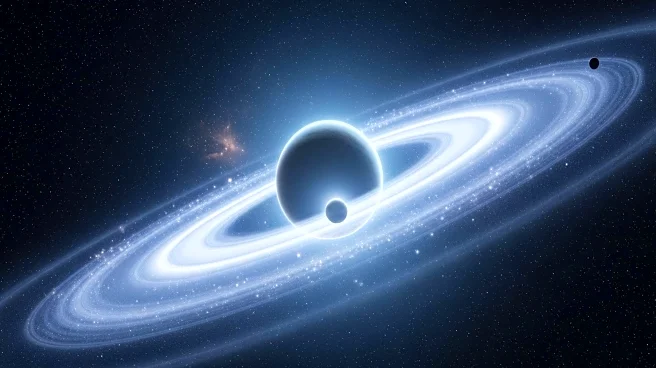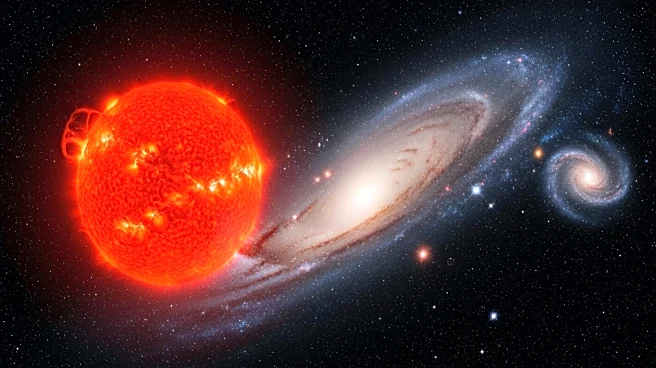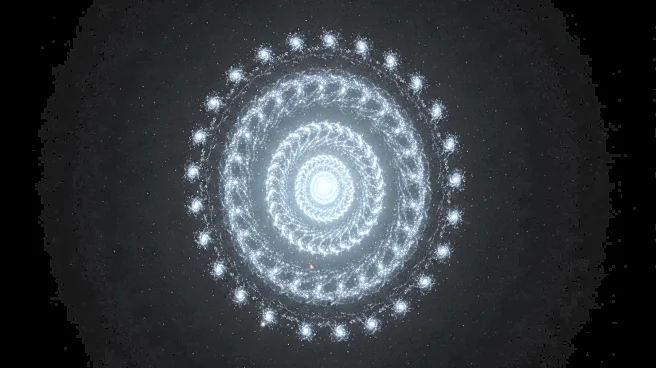What is the story about?
What's Happening?
NASA's James Webb Space Telescope has provided astronomers with detailed images of gravitational lensing, a phenomenon where massive objects like galaxies warp space-time, bending the light of distant galaxies behind them. The telescope's observations, part of the COSMOS-Web program, aim to study galaxy formation and uncover gravitational lenses. The images reveal new details about the effect, acting as cosmic magnifying glasses that allow astronomers to look further back into the universe's history. The James Webb Space Telescope's capabilities surpass those of the Hubble Space Telescope, offering greater detail and new insights into gravitational lensing.
Why It's Important?
Gravitational lensing, predicted by Albert Einstein's theory of general relativity, is a crucial tool for astronomers to study the universe's structure and history. The James Webb Space Telescope's enhanced imaging capabilities provide a deeper understanding of this phenomenon, aiding in the exploration of cosmic evolution and the distribution of dark matter. These observations contribute to the broader field of cosmology, offering insights into the universe's expansion and the formation of galaxies. The telescope's findings have the potential to refine existing theories and models, advancing our knowledge of the cosmos.
AI Generated Content
Do you find this article useful?
